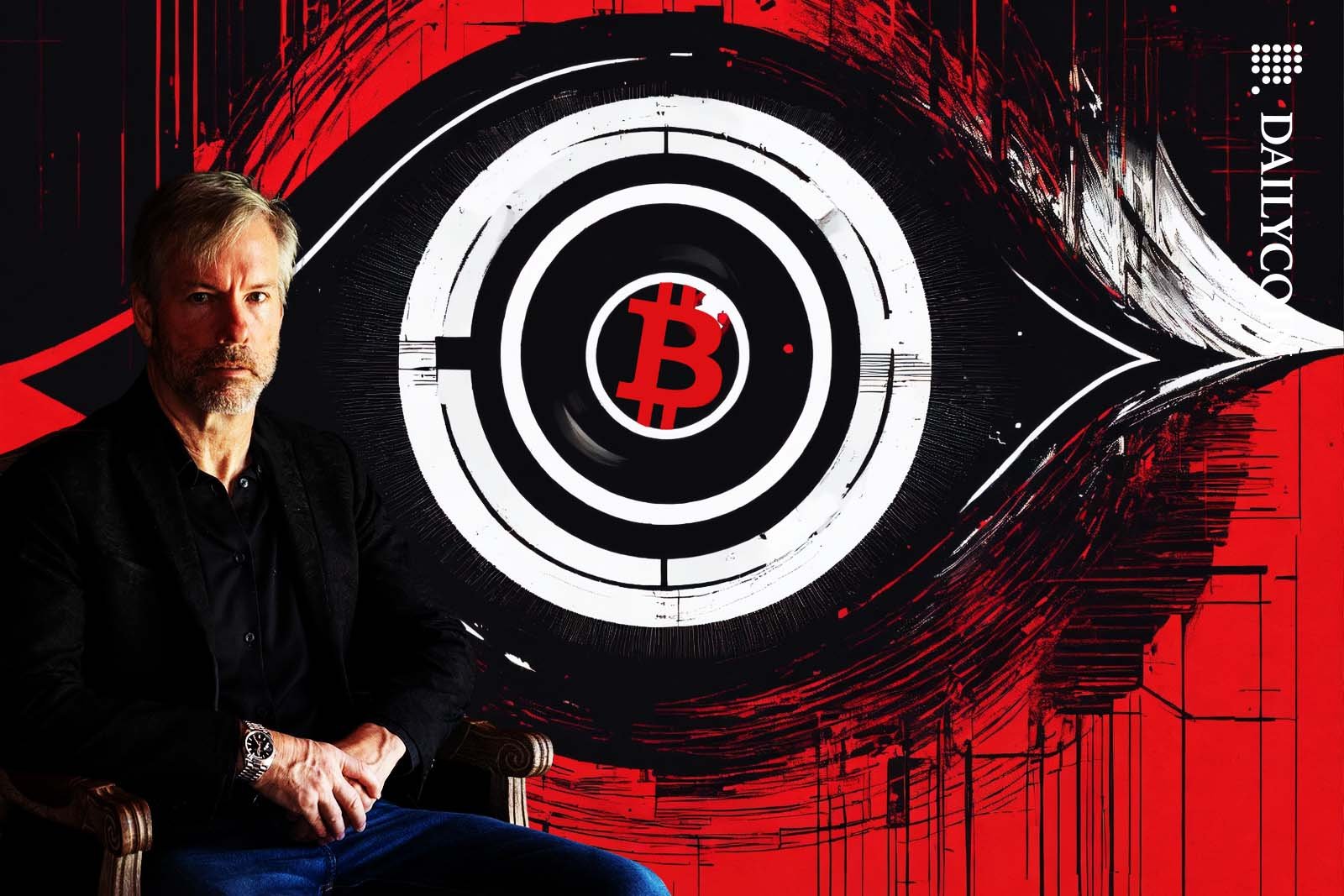
- MicroStrategy introduces a decentralized ID system.
- Anchors digital identities on Bitcoin’s blockchain.
- Challenges Worldcoin and its World.
Michael Saylor’s MicroStrategy is betting big on Bitcoin. Known for its strong Bitcoin maximalist position and large BTC holdings, MicroStrategy is now expanding into a new arena.
With its digital identity protocol launch, the firm is creating its own digital identity system, potentially challenging Worldcoin’s World ID system. The goal is to centralize the Bitcoin blockchain to a new digital identity system.
Why Digital Identities Are Key for Blockchain
During the recent MicroStrategy World Conference on Thursday, May 2, Michael Saylor pointed out the need to manage digital identity on the blockchain. He also unveiled a new MicroStrategy Orange protocol, which will use Bitcoin’s inscription technology to create a digital identity system.
Sponsored
Digital identity has been a contentious issue in crypto due to privacy concerns. However, crypto insides are increasingly converging around the need for such a technology to combat spam and enable decentralized governance.
Moreover, the digital ID system could prevent scams. In January, Saylor warned about the staggering rise of AI deepfakes plaguing the crypto space. The scams use realistic videos, including those of himself and figures like Elon Musk, to convince people to send crypto to unaffiliated wallets.
So far, Worldcoin, co-founded by OpenAI’s Sam Altman, has been the biggest player in the digital identity space. Its orb-scanning technology uses biometric data to verify that users are real humans. This enables it to give priority to real human transactions, reducing the problems with blockchain spam. Now, Saylor seeks to bring these digital IDs to Bitcoin, which is, as he often points out, the most secure and decentralized network.
How MicroStrategy’s Digital Identity Will Work
Unlike Worldcoin, MicroStrategy’s new Orange Protocol will not use biometric data. Instead, it will create decentralized identities (DIDs) that can be used for verification without centralized control. The protocol will generate and embed digital identity data directly into the Bitcoin blockchain using the technology known as ordinal inscriptions.
Sponsored
These inscriptions are not part of the transaction outputs but are appended in a way that does not affect the transaction’s primary purpose (transferring Bitcoin). As such, they did: the method embeds digital identity data directly into the Bitcoin blockchain using a part of the transaction known as the “witness.”
Bitcoin’s Segregated Witness (SegWit) method optimizes the space and cost of transactions. By inscribing identity data into this section, the method ensures that identity information is secure and immutable, benefiting from the blockchain’s inherent resistance to tampering and revision.
On the Flipside
- Unlike Worldcoin, MicroStrategy’s digital ID will not directly provide proof of personhood based on biometric data. Instead, it will leverage the immutability of Bitcoin’s blockchain to create digital identity profiles.
- In April, Telegram’s TON introduced its own blockchain digital ID system based on palm prints.
Why This Matters
MicroStrategy’s venture into decentralized digital identities using Bitcoin’s blockchain could offer a secure and immutable alternative to biometric-based systems like Worldcoin. This approach broadens Bitcoin’s application to include vital identity verification processes in the blockchain ecosystem.
Read more about why Bitcoin needs a digital ID system:
Michael Saylor Sounds the Alarm on Bitcoin Scam Epidemic
Read more about Tether’s reserves and where their profits come from:
Tether Reports Record Profits: Breaking Down USDT Reserves
